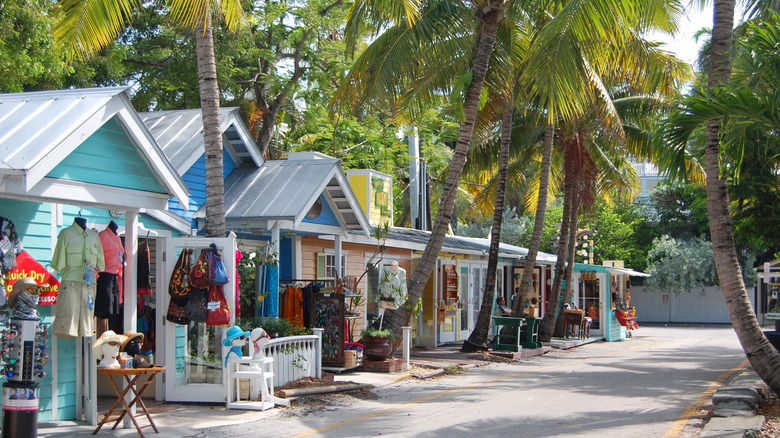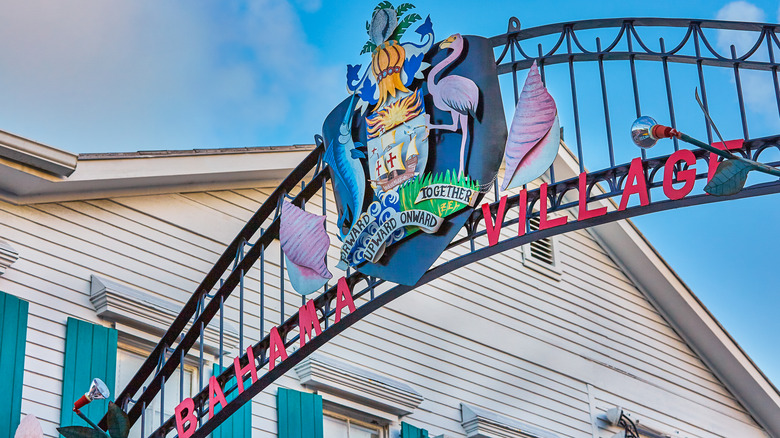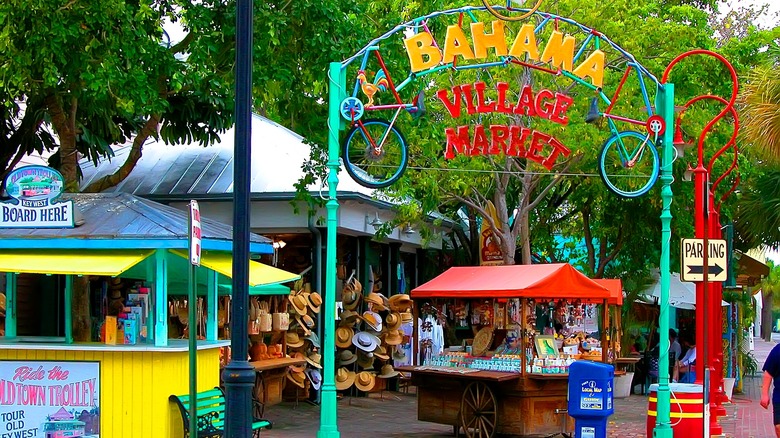Skip Florida's Overrated Duval Street For This Authentic Alternative With Far Fewer Crowds
Like many tourist destinations, there are two sides to Key West. One is front and center; you see it walking off the cruise ship and on the island's famous Duval Street. Like many other vacation spots, this side of the island has become increasingly overrun and commercialized. If you came to see the island immortalized in literature and song, it's easy to be disappointed. But the entire island has not lost its old-world charm, and there are still many outstanding, authentic island experiences in Key West. You just have to know where to look.
One spot where you can taste the original flavors of the island is just steps off Duval Street. Bahama Village was first settled by Bahamian immigrants in the 1800s. The area is a 16-block square between Whitehead and Fort on the island's southwest corner. From Duval, just head southwest on Petronia Street. There, an arch welcomes you, its iron frame emblazoned with conch shells and the Bahamas coat of arms.
Stepping into Bahama Village is like walking back in time. The streets are lined with traditional colorful "Conch houses," and local-owned businesses welcome you with homemade foods, clothing, and souvenirs. Key West chickens and cats crisscross the streets at will, roaming freely. Dense tropical vegetation brightens the scene; in fact, the settlers of Bahama Village are credited with bringing many of the plants and bright foliage that Key West is now known for. A stroll through the village is an adventure that can turn up surprises, like some of Key West's best eateries.
Bahama Village history and culture
In the early 1800s, many early Key West Conchs came from the Bahamas and made their livings from wrecking, the regulated salvage of shipwrecks on the nearby reefs. During this period, the town grew to become the state's largest port. Many more Bahamians immigrated throughout the nineteenth century for other jobs on the water: fishing, turtling, sponging, and shipbuilding. These newcomers settled in the area now known as Bahama Village, which continued to grow as an Afro-Caribbean enclave with traditional island architecture, foods, and culture.
The community remains authentic, even though it has seen its share of gentrification like many Black neighborhoods nationwide. Most businesses are owned by locals, even though the Black population has declined in recent decades. Bahama Village embraces its roots and stands out amongst the tourist trap gift shops and bars you will see on Duval.
The centerpiece of Bahama Village is the market on the corner of Petronia and Whitehead. In the spirit of a Caribbean straw market, the small area has open-air stalls and kiosks where local vendors sell handicrafts, food, and souvenirs. Several shops and boutiques line the streets and are easy to find as you wander through the village. To kick off Fantasy Fest in Key West each year, the Bahama Village hosts the Goombay Festival. For two days in October, the streets are filled with dancing and parades set to the pounding drums of junkanoo music. The festival includes live music by local and Bahamian artists and vendors selling island foods and crafts.
What to see, do, and eat in Key West's Bahama Village
While there are no big resorts or hotels Inside Bahama Village, the area is an easy walk from anywhere on the island. The Southernmost Beach Resort, for example, is only a few minutes walk down Duval Street. If you wish to avoid the bigger hotels, The Caribbean House is a small bed and breakfast on Petronia, and there are a handful of vacation rentals available inside the village.
Some of Key West's trendiest restaurants are located in Bahama Village. Cuisine in this little patch shows influences from all over the Caribbean, from the Bahamian peas and rice to the Jamaican jerk and curry dishes. Blue Heaven, located on the corner of Petronia and Thomas, is open for breakfast, lunch, and dinner — but is particularly well-known as a brunch spot. For some island flavor befitting its setting, check out Santiago's Bodega, a great stop for tapas and sangria.
The peak tourist season in Key West is March through May, but special events draw visitors year-round. The quietest time of year is September and October, except for the wildly popular Key West Fantasy Fest. These are also the peak months of Key West's hurricane season, so you'll want to check your hotel's cancellation policy should a storm interfere with your travel plans.


